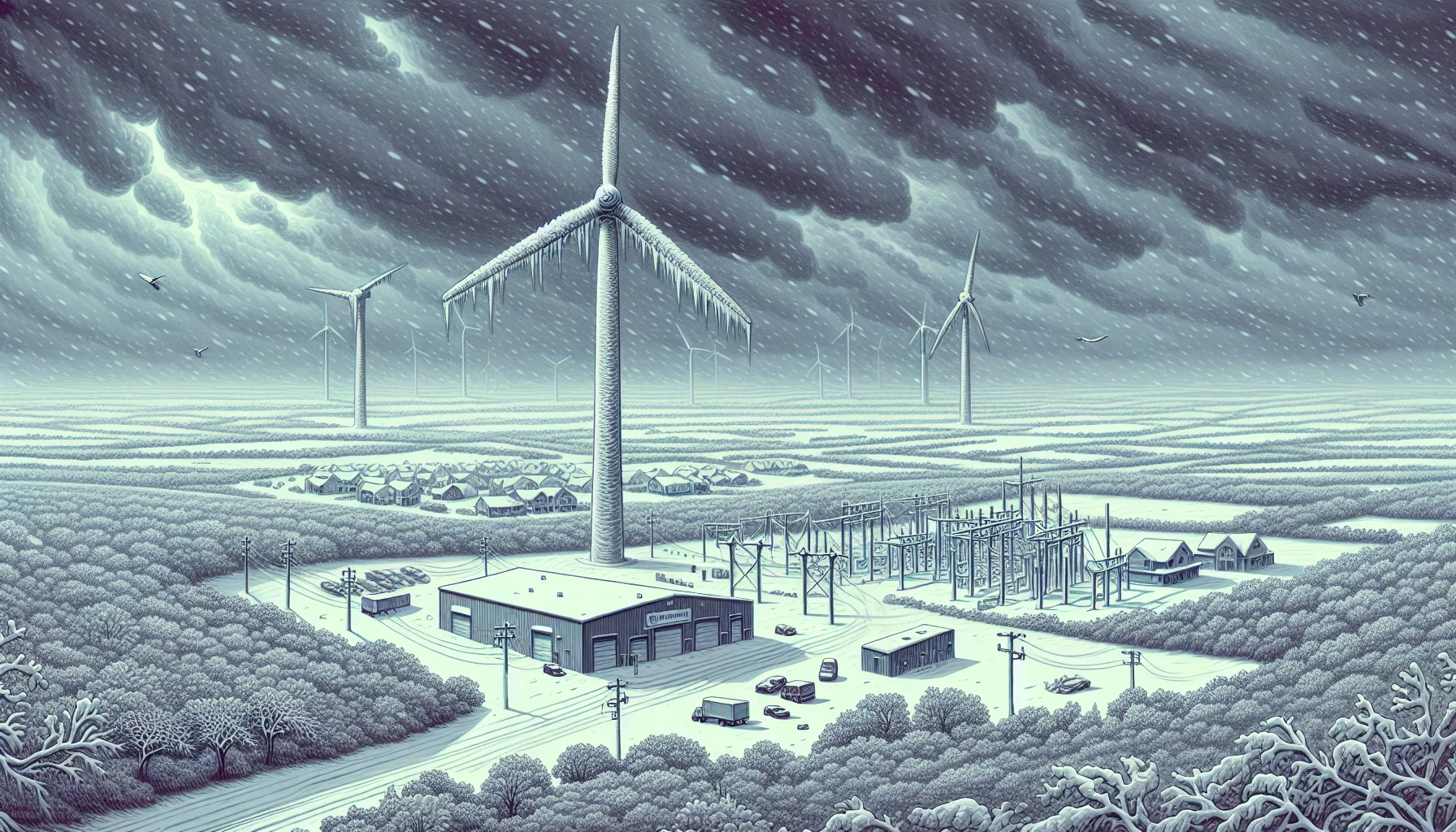
2021 Texas Power Crisis
by: The Calamity Calendar Team
February 14, 2021
A Storm Like No Other
In February 2021, as Winter Storm Uri barreled towards Texas with a fury seldom seen in the typically warm state, millions of residents could hardly have imagined the ordeal that was about to unfold. Uri was not just another winter storm; it was a meteorological beast that would reveal grave vulnerabilities in Texas's infrastructure, setting off a catastrophic chain of events. This was not the first cold snap to touch down in the Lone Star State, but it was one with all the makings of a perfect storm—metaphorically and literally.
By the time Texans began bracing for the approaching front, the meteorologists' warnings of extreme sub-zero temperatures and widespread snowfall were no longer speculative caution; they were inevitable predictions. The preparation was swift but ultimately insufficient, as the state was unprepared for such harsh cold. The core issue lay deep within the wires and stations: Texas, unlike most other American states, operates under its own electricity grid. Managed by the Electric Reliability Council of Texas (ERCOT), the power grid's famous independence, once seen as its strength, became its Achilles' heel.
The Crisis Unfolds
As temperatures plummeted between February 10 and 14, the electric demand surged meteorically—people across Texas turned up their heating systems, taxing the already strained power network. On February 14, when Winter Storm Uri hit, ERCOT's nightmare began. Power plants stumbled and faltered as freezing conditions incapacitated facilities designed mainly to withstand sweltering heat, not deadly cold.
The morning of February 15 proved to be a critical turning point. With power generation failing—spread across gas, coal, nuclear, wind, and solar installations—ERCOT declared a state of energy emergency. Rolling blackouts, a desperate measure to conserve what little power remained, swept across neighborhoods, affecting millions already. By February 16, over four million Texans found themselves without electricity in teeth-chattering cold. Darkness eclipsed light as circuits went dead, leaving families in the cold, many huddled with blankets in frigid temperatures. Dim candle-lit rooms and the eerie glow of flashlights became the norm.
Across the state, water systems buckled under pressure. Pipes froze and burst, flooding homes or reducing the flow to a trickle of murky water. Both urban and rural areas struggled, and officials urged caution as resources dwindled. Vehicles lined up for miles for bottled water, and grocery stores, though open, grappled with shortages.
The Human Cost and Economic Impact
The storm left a tragic trail of human suffering. Reports surfaced of residents succumbing to hypothermia in their own homes, others poisoned by carbon monoxide as they sought warmth from vehicles in enclosed spaces. Emergency services were overwhelmed, grappling with calls of distress from those trapped or in dire need. The loss of life, estimated between 150 to over 200, marked a somber testament to the havoc wrought.
Thanks for subscribing!
Economically, the impact had devastating ripples across Texas and beyond. Damage estimates soared into the ballpark of $130 billion, spanning insurance claims to lost business productivity and infrastructure repairs. Everyday life was disrupted, casting a shadow on the state's resilient image.
Accountability and Recovery
As temperatures gradually climbed between February 18 and 20, power was slowly restored, neighborhoods flickering back to life, although significant challenges persisted in returning to pre-crisis conditions. What followed was a period marked by scrutiny and accountability. Questions rose to the fore: why was Texas, an energy powerhouse, left so vulnerable? The outcry became not only about failed systems but the structures and decisions that led there.
In the aftermath, the focus turned to ERCOT and infrastructure management. With resignation letters flying from ERCOT's board members, there was a clamor for reform and assurances that such a catastrophe would not happen again. Beyond Texas, the crisis sparked discussions on energy reliability and climate resilience across the nation.
At federal levels, the Federal Energy Regulatory Commission (FERC) and the North American Electric Reliability Corporation (NERC) stepped in and launched in-depth investigations into the incident, proposing reforms and explorations into infrastructure winterization. The takeaway was stark: adaptation could no longer be an option but a necessity.
Looking Forward
Since the 2021 crisis, Texas has seen significant efforts aimed at shoring up the vulnerabilities laid bare. The dialogues continue—how best to balance the embrace of renewable energy and ensure grid stability? Could Texas remain proudly on its grid while affording protection from climate extremes?
While progress is on the horizon, the memory of those cold February days remains vivid for those affected. Texas’s power crisis of 2021 stands as a reminder that vigilance, preparedness, and unity are indeed the backbones of resilience. In electricity's ebb and flow, we rediscover the strength found in connection, both figuratively and literally—through an interconnected grid or a community's shared will to overcome adversity.
Stay in the Loop!
Become a Calamity Insider and get exclusive Calamity Calendar updates delivered straight to your inbox.
Thanks! You're now subscribed.